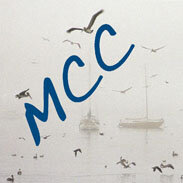Priority Development Area (PDA) designation for the Midcoast - abandonedIn December 2011, San Mateo County applied to ABAG (Association of Bay Area Governments) for PDA designation for the Midcoast as a “rural corridor” place type. As a result of significant public opposition, in June 2012, ABAG abandoned the idea of including rural areas under the Priority Development Area designation. BackgroundThe FOCUS program was launched in 2007 by the Association of Bay Area Governments (ABAG) and the Metropolitan Transportation Commission (MTC), with regional goals to minimize sprawl, reduce vehicle miles traveled, and encourage the production of housing near jobs and transit. The PDA framework was adopted to support focused growth as mixed-use infill development near transit and job centers, with an emphasis on housing. PDAs are expected to accommodate the majority of the region’s population and employment growth. In August 2011, several new “rural” PDA place types were created which were intended to support local efforts to improve the services, infrastructure, and connectivity of these areas to encourage a reduction in driving locally. Actions on Midcoast PDA1/23/12: MCC Special Meeting due to surprise item on Board of Supervisors' 1/24 Consent Agenda. “Resolution in support of the application for Priority Development Area (PDA) status for the Midcoast Urban Area.” MCC asked the Supervisors to delay the decision for 45 days in order to give the community time to study and understand the ramifications of this step. 1/24/12: Despite objections from MCC, Committee for Green Foothills, and Sierra Club Loma Prieta Chapter, the Board of Supervisors unanimously approved the Resolution in support of Midcoast PDA status. 3/12/12: ABAG Regional Planning Committee meeting to review PDA applications for rural place types. The committee decided to recommend that ABAG postpone decision on rural PDAs until their June meeting to give the local governments time to better inform the affected communities, and for ABAG staff to address the many local comments that were received. ABAG staff was emphatic that the "served by transit" eligibility criterion for other PDA's did not apply to the rural areas, nor did they need to accommodate more housing. One RPC member commented that it was problematic to call rural area place types PDAs as it mixes them up with the original concept, which was developed over time with a lot of careful consideration. 3/28/12: MCC asked Supervisor Horsley to support MCC request that PDA application for the Midcoast be brought back to the Board of Supervisors for reconsideration before the June ABAG meeting. June 2012: ABAG abandoned the idea of including rural areas under the PDA designation. Comment Letters2012-01-23 Committee for Green Foothills to Board of Supervisors Related Links2011: One Bay Area Grant Program proposes 70% of federal transportation funding be restricted to PDAs. Bay Area City/County comment letters.
|
Rural Community Investment Area (RCIA) designation for Midcoast commercial areasIn June 2012, ABAG created a new designation, Rural Community Investment Area (RCIA), which does not fall under the PDA designation, is not intended to draw significant new jobs or housing, but has the same funding priority. The County applied for 5 RCIAs for the Midcoast: Northern Montara, Moss Beach, Princeton, El Granada, and Miramar (acreage is limited - see maps). Projects supported by any future funding under the RCIA designation should improve the pedestrian environment, enhance access for bicyclists and transit riders, and provide innovative ways to reduce Vehicle Miles Traveled. The scale and costs of these projects would be consistent with the existing character and planned densities of the Midcoast. |
